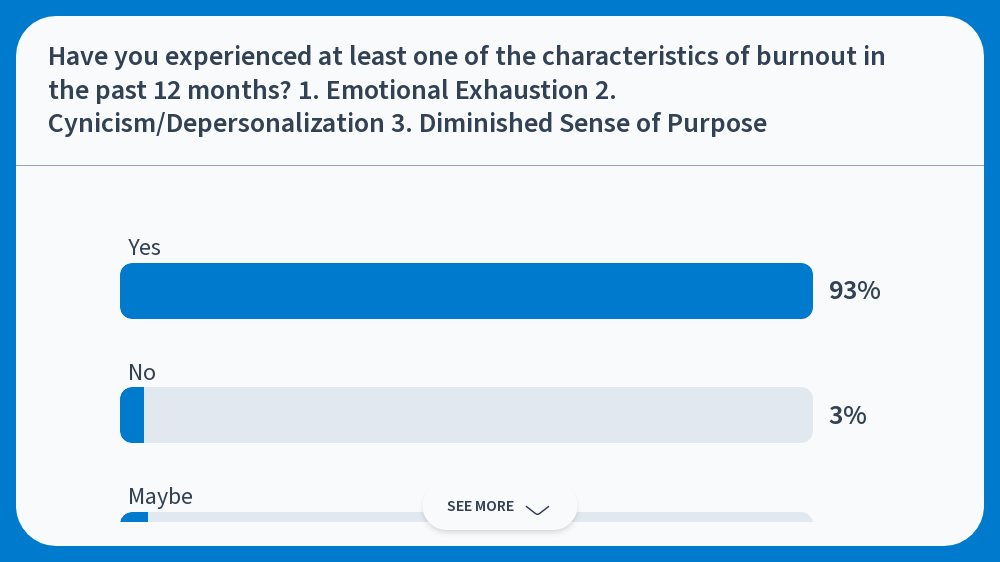Burnout Is Not Rare—It’s the Rule
Recent polls from my speaking events show what many of us already feel but don’t always say out loud: burnout is nearly universal. In healthcare, education, and other service-focused industries, almost everyone has experienced it in the past year. These numbers aren’t just statistics—they’re a wake-up call that burnout is no longer the exception. It’s the rule.
+++
At a recent event, I asked the audience a simple question: “Have you felt burned out at all in the past 12 months?”
The responses were overwhelming. Out of more than 120 participants, only 3% said no. Everyone else (93-96%) admitted they had.
live poll results from a recent speaking engagement
At another event, 224 people answered the same question. Just 8 of them said they hadn’t experienced burnout. That means 216 people had.
Take a moment to let that sink in.
If we’re still telling ourselves that burnout is rare, that it only happens occasionally, or that it’s a sign of weakness, we’re lying to ourselves. The data and the lived experiences of people in the room prove otherwise.
Burnout has become an epidemic. It’s not just in healthcare (though the numbers there are staggering). It’s also affecting service-oriented industries across the board: K–12 education, higher education, and law enforcement, to name just a few.
The first step in solving a problem is acknowledging it exists. When it comes to burnout, denial is costly. People are suffering, workplaces are struggling, and communities are paying the price.
The good news? There are solutions. Recovery is possible. Prevention is possible. But none of that matters unless we start by facing the reality: burnout isn’t the exception. It’s the norm.
And it’s time we do something about it.

